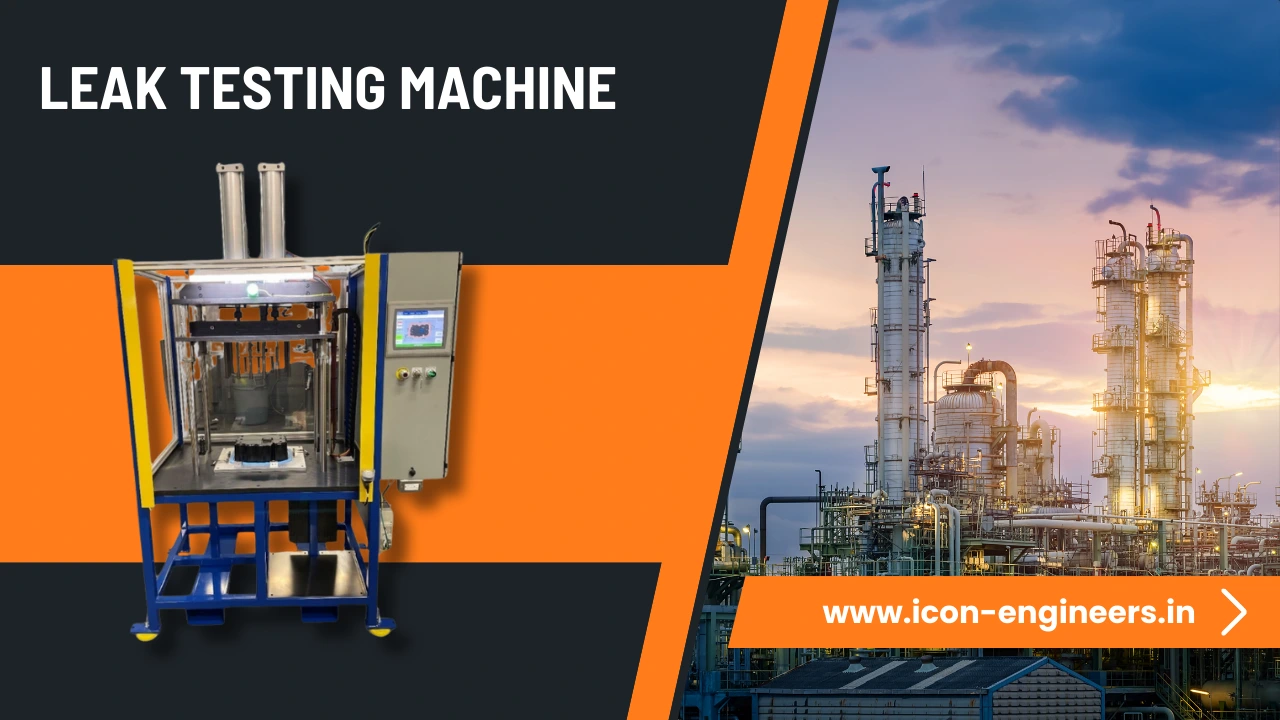In today’s fast-paced industrial world, ensuring the integrity and safety of components, systems, and machinery is more critical than ever. One of the most essential aspects of quality control across industries—automotive, pharmaceutical, aerospace, packaging, and HVAC—is leak testing. Understanding the basic principles of leaks and leak testing helps ensure product reliability, operational efficiency, and environmental safety.
At Icon Engineers, we specialize in the design and manufacturing of advanced leak testing machines tailored to the specific needs of each industry. This blog will provide insights into the fundamentals of leak behavior, types of leak tests, and the importance of leak test pressure in achieving accurate leakage testing.
What is a Leak?
A leak is the unintended passage of a fluid (liquid or gas) through a defect or flaw in a container, pipe, or any sealed system. Leaks may occur due to poor material quality, manufacturing defects, incorrect assembly, or wear over time. Even microscopic leaks can have disastrous consequences, especially in critical applications such as fuel systems or medical devices.
Why Leak Testing is Essential
Leak testing ensures that a component or system is properly sealed and functions reliably under specified operating conditions. It verifies that no unacceptable leaks exist and that safety standards are met. The implications of undetected leaks range from performance degradation to environmental hazards and even catastrophic failure.
Types of Leak Tests
There are several types of leak tests, each with different methodologies based on sensitivity, application, and industry standards. Common types include:
1. Pressure Decay Test
One of the most commonly used methods, especially in mass production. It involves pressurizing the test part and measuring the pressure drop over time. A drop indicates leakage.
2. Vacuum Decay Test
This method applies a vacuum to the component and monitors the rise in pressure. It is ideal for systems that operate under vacuum conditions.
3. Bubble Test
Often used for visual confirmation, this test involves submerging the pressurized part in water or applying a soap solution to detect escaping bubbles at the leak point.
4. Tracer Gas Testing (Helium or Hydrogen)
Highly sensitive and used for detecting very small leaks. A tracer gas is introduced, and any escaping gas is detected using a mass spectrometer or sensor.
5. Ultrasonic Leak Detection
This non-destructive method detects the high-frequency sound generated by escaping gases.
Each of these leak tests serves different applications depending on the product’s material, size, and criticality of the leak.
Importance of Leak Test Pressure
Leak test pressure is a vital parameter in any leakage testing process. It refers to the pressure level at which a component is tested for leaks. Choosing the correct leak test pressure is crucial because:
- If the test pressure is too low, small leaks may go undetected.
- If the pressure is too high, it may damage the part or produce false positives.
The leak test pressure is typically set based on the working pressure of the part, with an added safety margin. Standards and customer specifications often guide this decision.
Factors Affecting Leakage Testing Accuracy
- Temperature: Variations can impact pressure readings.
- Test Volume: Larger parts may show slower pressure changes.
- Seal Quality: Test fixture seals must be leak-free.
- Surface Finish: Rough or uneven surfaces can affect sealing and results.
- Test Time: Longer test durations increase sensitivity but may reduce throughput.
These factors must be carefully considered to ensure that leakage testing is both accurate and efficient.
Conclusion
Understanding the basic principles of leaks and leak testing is fundamental to achieving quality assurance and safety across various industries. From selecting the right leak test method to setting the correct leak test pressure, each step requires careful planning and precision.
At Icon Engineers, we provide customized leak testing machines and solutions that help our clients maintain high standards of safety, compliance, and product performance. Whether it’s a small component or a large assembly, our expertise ensures that leakage testing is done right, every time.
Visit Now : https://icon-engineers.in/basic-principles-of-leaks-leak-testing-machines/
Gmail : iconengineers38@gmail.com,
Mobile No. +91-9818637156




